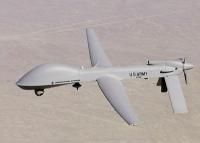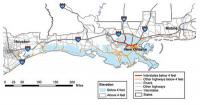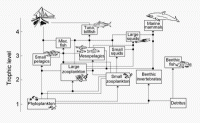-
Experts are often fallible, so expert advice should be examined carefully
Evidence shows that experts are frequently fallible, say leading risk researchers, and policy makers should not act on expert advice without using rigorous methods that balance subjective distortions inherent in expert estimates. Many governments aspire to evidence-based policy, but the researchers say the evidence on experts themselves actually shows that they are highly susceptible to “subjective influences” — from individual values and mood, to whether they stand to gain or lose from a decision — and, while highly credible, experts often vastly overestimate their objectivity and the reliability of peers.
-
-
IPCC projections “wildly over optimistic”: Climate expert
As a new chairman is appointed to the Intergovernmental Panel on climate Change (IPCC), one climate expert has said headline projections from the organization about future warming are “wildly over optimistic.” The expert says that IPCC claims that “global economic growth would not be strongly effected” are unrealistic and that if we are to meet the 2°C warming target, wealthy and high emitting individuals will need to make dramatic cuts in the energy they use and in the material goods they consume at least until the transition away from fossil fuels is complete.
-
-
Improving precision of drone navigation

Researchers are working to bring a new level of precision to the navigation systems used to guide drones. The work is supported through a contract with Southern Company, one of the U.S. largest energy companies, which plans to use unmanned aircraft to enhance safety for crews in the field and improve reliability for customers. The researchers have designed a prototype which uses onboard ultrasound sensors to relay information on the aircraft’s location to its operator.
-
-
Sea level rise dooms Miami, New Orleans

Say goodbye to Miami and New Orleans. No matter what we do to curb global warming, these and other beloved U.S. cities will sink below rising seas, according to a new study. “In our analysis, a lot of cities have futures that depend on our carbon choices but some appear to be already lost,” says one of the study’s authors. “And it is hard to imagine how we could defend Miami in the long run.” An online tool shows which U.S. cities may face “lock-in dates beyond which the cumulative effects of carbon emissions likely commit them to long-term sea-level rise that could submerge land under more than half of the city’s population,” said the study.
-
-
Global marine analysis: Food chain collapse likely

A world-first global analysis of marine responses to climbing human CO2 emissions has painted a grim picture of future fisheries and ocean ecosystems. Marine ecologists say the expected ocean acidification and warming is likely to produce a reduction in diversity and numbers of various key species that underpin marine ecosystems around the world. The researchers found that there would be “limited scope” for acclimation to warmer waters and acidification. Very few species will escape the negative effects of increasing CO2, with an expected large reduction in species diversity and abundance across the globe.
-
-
Instant water heater offers energy, cost savings
Traditional water heaters take time to reach preferred temperatures, thus wasting water and energy. A new instant hot water solution, developed through the EU-funded RAPIDHEAT project, successfully optimized heating and control technologies to develop a lightweight low thermal mass heater that provides full temperature output within two seconds of switch-on.
-
-
An app alerts people, law enforcement about potential crime risk
You are walking home after a night out on a dark autumn evening. Suddenly, you get the feeling that someone is following you. You look over your shoulder, and see a shadow between the trees in the park. You quicken your steps. When you glance behind you again, you see the shadow disappear in between two houses. This is when you could press the “help” button on the app that you have downloaded. It sends a message to everyone in the area who also has the app, with information about your phone number and where you are. This way they are able to call you, alert emergency services, or get to your location if need be. The app has been developed by a group of student entrepreneurs.
-
-
DYI experiment demonstrates the physics of climate change for students

There are two main causes of rising sea levels — thermal expansion and melting land-based ice. Thermal expansion is responsible for most of the rising sea levels during the past century, but an increasing amount of rising levels into the future will be due to the melting Greenland and Antarctic ice sheets, as well as melting glaciers across the globe, especially the Himalayas, experts say. The rising sea level is a global phenomenon and will affect all coastal cities, but some places are more vulnerable than others. For example, the sea level on the North American Atlantic coast north of Cape Hatteras is rising three to four times faster than the global average, which has been attributed to a reduction in the strength of the Atlantic Meridional Overturning Current.
-
-
Math story time at home markedly improves math achievement in school

Adding math talk to story time at home is a winning equation for children’s math achievement, according to new research. The study shows a marked increase in math achievement among children whose families used Bedtime Math, an iPad app that delivers engaging math story problems for parents and children to solve together. A recent study found that math-anxious parents who help their children with math homework actually undermine their children’s math achievement – but the new findings demonstrate that structured, positive interactions around math at home can cut the link between parents’ uneasiness about math and children’s low math achievement.
-
-
NSF awards $74.5 million to 257 interdisciplinary cybersecurity research projects
The NSF the other day announced the awarding $74.5 million in research grants through the NSF Secure and Trustworthy Cyberspace (SaTC) program. In total, the SaTC investments include a portfolio of 257 new projects to researchers in thirty-seven states. The largest, multi-institutional awards include research better to understand and offer reliability to new forms of digital currency known as cryptocurrencies, which use encryption for security; invent new technology to broadly scan large swaths of the Internet and automate the detection and patching of vulnerabilities; and establish the “science of censorship resistance” by developing accurate models of the capabilities of censors.
-
-
Tony Blair: Many Muslims support Islamic extremists' ideology
Tony Blair has warned that the ideology which drives Islamic extremists has significant support from Muslims around the world. Blair said that unless religious prejudice in Muslim communities is rooted out, the threat from the extremists will not be defeated. Blair, speaking at the 9/11 Memorial Museum in New York City, said that while the number of people engaging in violence by joining groups like Islamic State is relatively small, many of their views are widely shared.
-
-
ISIS, al-Qaeda, al-Nusra share near identical ideologies: Report
A just-published report analyzes a cross-section of 114 propaganda sources over two years from the three main Salafi-jihadi groups: ISIS, Jabhat al-Nusra, and al-Qaeda in the Arabian Peninsula. The three groups share near identical ideologies, challenging the concept that “ISIS is more extreme than al-Qaeda.” Built upon distorted Islamic religious principles, the propaganda produces single-minded focus on violent jihad. The report finds explicit references to these principles throughout the propaganda:
-
-
To “see” climate change, check your thermometer

Scientists often use satellites, supercomputers, or high-tech arrays of instruments to show how the climate is changing. But now researchers have shown how climate change can be visible, even at just one location, with the simplest instrument of all: a thermometer.
-
-
Climate change will soon make atolls in the Pacific, Indian oceans uninhabitable

More than half a million people live on atolls throughout the Pacific and Indian Oceans. A new study shows that the combined effect of storm-induced wave-driven flooding and sea level rise on island atolls may be more severe and happen sooner than previous estimates of inundation predicted by passive “bathtub” modeling for low-lying atoll islands, and especially at higher sea levels forecasted for the future due to climate change.
-
-
New flame retardant is naturally derived, nontoxic
Flame retardants are added to foams found in mattresses, sofas, car upholstery, and many other consumer products. Once incorporated into foam, these chemicals can migrate out of the products over time, releasing toxic substances into the air and environment. Inspired by a naturally occurring material found in marine mussels, researchers have created a new flame retardant to replace commercial additives that are often toxic and can accumulate over time in the environment and living animals, including humans.
-
More headlines
The long view
New Technology is Keeping the Skies Safe
DHS S&T Baggage, Cargo, and People Screening (BCP) Program develops state-of-the-art screening solutions to help secure airspace, communities, and borders
Factories First: Winning the Drone War Before It Starts
Wars are won by factories before they are won on the battlefield,Martin C. Feldmann writes, noting that the United States lacks the manufacturing depth for the coming drone age. Rectifying this situation “will take far more than procurement tweaks,” Feldmann writes. “It demands a national-level, wartime-scale industrial mobilization.”
How Artificial General Intelligence Could Affect the Rise and Fall of Nations
Visions for potential AGI futures: A new report from RAND aims to stimulate thinking among policymakers about possible impacts of the development of artificial general intelligence (AGI) on geopolitics and the world order.
Smaller Nuclear Reactors Spark Renewed Interest in a Once-Shunned Energy Source
In the past two years, half the states have taken action to promote nuclear power, from creating nuclear task forces to integrating nuclear into long-term energy plans.
Keeping the Lights on with Nuclear Waste: Radiochemistry Transforms Nuclear Waste into Strategic Materials
How UNLV radiochemistry is pioneering the future of energy in the Southwest by salvaging strategic materials from nuclear dumps –and making it safe.
Model Predicts Long-Term Effects of Nuclear Waste on Underground Disposal Systems
The simulations matched results from an underground lab experiment in Switzerland, suggesting modeling could be used to validate the safety of nuclear disposal sites.
